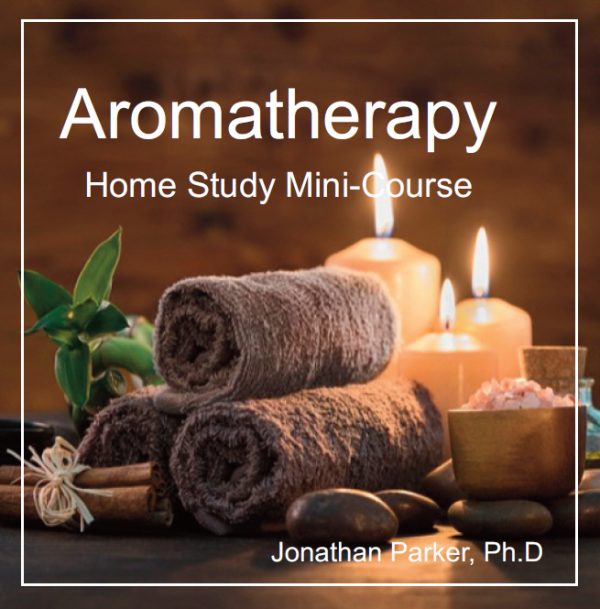How Are Essential Oils Extracted? Methods Explained

Hey there, amazing readers! 🖐️ Just a quick note: yes, we know there are a lot of ads here. Trust us, we get it—it’s not the prettiest look, but they help us keep this blog alive and kicking. Those pesky little ads cover the costs of all the behind-the-scenes magic, from hosting and tech stuff to creating content we hope you’ll love.
We’re committed to delivering quality posts, and your support (even just sticking around despite the ads) means everything to us. So, bear with us, and thanks for helping us keep the good vibes rolling. Now, on to the fun stuff! 😉
TRANSLATE BUTTON AT THE END OF THE ARTICLE
A Quick Overview
Essential oils have taken the wellness world by storm!
If you’ve ever caught a whiff of lavender or eucalyptus and felt an instant sense of calm, you know the magic of these concentrated plant extracts.
But how exactly do we get them from the plants?
In this article, we’ll journey through the fascinating methods of essential oil extraction.
Buckle up as we explore everything from steam distillation to the more traditional enfleurage.
Introduction: Discovering the World of Essential Oils
Essential oils have become a staple in wellness routines, home fragrance, and natural remedies.
They’re not just trendy; they carry centuries of tradition and knowledge.
These potent oils are extracted from various parts of plants, including leaves, flowers, roots, and even bark.
Because they encapsulate the aromatic properties of their source plants, each oil brings a unique scent and potential benefits.
Imagine walking through a lush garden filled with blooming flowers and fragrant herbs.
That’s the essence captured in essential oils!
This treasure trove of scents can enhance our mood, promote relaxation, and even support physical health.
But how do we turn the raw materials—like fresh lavender or zesty orange peel—into the little bottles of magic we find in stores?
Let’s explore the different methods used to extract these aromatic wonders.
What Are Essential Oils? The Essence of Nature
Essential oils are concentrated, volatile compounds found in plants.
They’re responsible for a plant’s aroma, flavor, and often its medicinal properties.
When I think of essential oils, I picture tiny, fragrant droplets that capture the spirit of the plant.
Here are some key points about these incredible substances:
Concentration: Essential oils are potent.
Just a few drops can have a significant impact.
Therapeutic Properties: Many oils are known for their health benefits.
For example, peppermint oil can help with digestion, while tea tree oil has antiseptic qualities.
Versatility: You can use essential oils in various ways, such as in diffusers, massage oils, or even in cooking!
Natural Origins: Unlike synthetic fragrances, essential oils come straight from nature, making them appealing to those who prefer natural products.
With such a rich background, it’s no wonder that people around the globe are drawn to essential oils.
They provide a sensory experience and a pathway to enhanced well-being.
The Importance of Extraction Methods in Aromatherapy
The extraction method plays a crucial role in determining the quality and properties of essential oils.
Different techniques can yield oils with varying aroma profiles and therapeutic benefits.
It’s fascinating to think that the same plant can produce different essential oils based on how it’s processed.
Here’s why the method matters:
Purity: Some methods may introduce impurities, affecting the oil’s quality.
Yield: Certain techniques can extract more oil from the plant material, making them more economical.
Profile: The extraction method influences the final scent and properties.
For instance, steam distillation often captures a wider range of fragrant compounds compared to cold pressing.
Essential oil aficionados often debate which extraction method yields the best product.
It’s a blend of science and art, with each method offering distinct advantages.
So, let’s take a closer look at these methods!
Steam Distillation: The Most Popular Extraction Method
When you think of essential oil extraction, steam distillation likely comes to mind.
It’s the most widely used method, and for good reason!
Here’s how it works:
Steam Generation: Water is heated, producing steam that rises through the plant material.
Oil Capture: As the steam passes through, it vaporizes the volatile compounds, which include the essential oil.
Cooling: The steam and oil mixture is then cooled, allowing the oil to separate and rise to the surface.
This method is great for extracting oils from plant parts like leaves, flowers, and stems.
It enhances the purity and aromatic profile while minimizing the risk of damaging heat.
However, it requires specialized equipment and can be time-consuming.
I remember my first attempt to make rosemary oil using steam distillation.
The scent was incredible, but I underestimated the time and setup involved.
It was a learning experience!
Cold Pressing: Extracting Oils from Citrus Fruits
Citrus fruits like oranges, lemons, and limes are best extracted using cold pressing.
This method is straightforward:
Mechanical Pressure: The outer peel is pierced and pressed, releasing the essential oil.
No Heat: Because there’s no heat involved, the oil maintains its fresh, vibrant aroma.
Cold pressing is ideal for citrus essential oils, preserving their zesty fragrance and therapeutic properties.
You can easily do this at home with a simple press.
Just remember: the oil from the peel is what gives it that refreshing scent!
If you’ve ever enjoyed the smell of freshly squeezed orange juice, you’ve experienced cold-pressed oil’s power.
It’s amazing how a little zest can brighten your day.
Solvent Extraction: Capturing Fragrance in a Jar
For delicate flowers that can’t withstand heat, solvent extraction is the method of choice.
Here’s how it works:
Solvent Application: A solvent (like hexane or ethanol) is applied to the plant material, dissolving the essential oils.
Evaporation: The solvent is then evaporated, leaving behind a concentrated product known as an absolute.
This method produces rich, fragrant oils, perfect for perfumes and high-quality aromatherapy products.
However, it’s crucial to ensure that any residual solvent is removed for safety reasons.
I once read about how jasmine oil is produced this way.
The delicate blossoms are too fragile for steam distillation, making solvent extraction the perfect alternative.
It’s a beautiful reminder of how diverse our extraction methods can be!
CO2 Extraction: A Modern Approach to Purification
In recent years, CO2 extraction has gained popularity due to its efficiency and quality.
This method uses carbon dioxide under high pressure to extract the oil:
Supercritical State: CO2 is transformed into a supercritical state, acting like both a liquid and a gas.
Selective Extraction: This allows for the extraction of specific compounds without damaging the plant material.
Purity: Once the pressure is eased, the CO2 evaporates, leaving behind pure essential oil.
CO2 extraction captures a wider range of compounds, producing a more complex scent profile.
It’s a favorite among producers aiming for high-quality oils.
While it requires advanced equipment, the results are often worth the investment.
I recently tried some CO2-extracted oils and was blown away by their depth of aroma.
It’s a game changer for those serious about essential oils!
Enfleurage: A Traditional Method with a Floral Touch
Enfleurage is one of the oldest methods of extraction, often used for delicate flowers like jasmine and tuberose.
Here’s how it goes down:
Fat Absorption: Fresh flowers are placed in a layer of fat, which absorbs their fragrance over time.
Solvent Addition: After a few days, the fat is combined with alcohol to separate the essential oil.
While labor-intensive, enfleurage produces some of the finest floral fragrances.
It’s a labor of love, but the results are stunning!
I’ve always admired the dedication behind enfleurage.
It’s a beautiful tradition that highlights the connection between plants and our senses.
Hydro Distillation: The Art of Water-Based Extraction
Hydro distillation is similar to steam distillation but involves immersing the plant material in water.
Here’s how it works:
Boiling Water: The plant material is boiled in water, allowing the steam to carry essential oil.
Collection: As in steam distillation, the steam is cooled and condensed, separating the oil.
This method is suitable for certain plants and is often used in producing oils from non-volatile materials.
While it yields less oil, it’s a gentle way to capture the essence of the plant.
I remember experimenting with hydro distillation using herbs from my garden.
The process was simple, yet the result was a delightful herbal oil that I still use in my cooking!
Fractional Distillation: Separating the Best Components
Fractional distillation is a more advanced technique that separates essential oils into different components.
Here’s the basic idea:
Temperature Control: By carefully controlling temperature, distillers can isolate specific compounds.
Purity and Quality: This results in oils with distinct aromatic properties, allowing for customization.
This technique is often used in large-scale production to create signature scents for perfumes and aromatherapy blends.
It’s like fine-tuning a recipe to achieve that perfect flavor!
When I first learned about fractional distillation, I thought of it as the ultimate blending art.
It’s incredible how science can enhance nature’s gifts!
Choosing the Right Method: What to Consider
Selecting the best extraction method depends on several factors:
Plant Type: Some plants are more suited to specific methods.
Desired Properties: Consider what therapeutic benefits you’re aiming for.
Budget: Some methods require expensive equipment, while others are more accessible.
Quality: Research the supplier to ensure they prioritize quality in their extraction process.
When I began my essential oil journey, I found it helpful to experiment with different oils and learn about their extraction methods.
It deepened my appreciation for the craftsmanship involved.
Conclusion: Embracing the Power of Essential Oils
Essential oils hold a special place in our lives, offering us a glimpse into nature’s beauty and healing power.
From steam distillation to enfleurage, each method brings something unique to the table.
Understanding these techniques helps us choose quality oils that resonate with our needs and preferences.
Whether you’re using them for aromatherapy, wellness, or simply to enjoy their delightful aromas, essential oils can enrich your life.
So, next time you open a bottle of your favorite oil, take a moment to appreciate the artistry behind its extraction.
It’s a journey through nature that’s worth celebrating!

The Enlightenment Journey is a remarkable collection of writings authored by a distinguished group of experts in the fields of spirituality, new age, and esoteric knowledge.
This anthology features a diverse assembly of well-experienced authors who bring their profound insights and credible perspectives to the forefront.
Each contributor possesses a wealth of knowledge and wisdom, making them authorities in their respective domains.
Together, they offer readers a transformative journey into the realms of spiritual growth, self-discovery, and esoteric enlightenment.
The Enlightenment Journey is a testament to the collective expertise of these luminaries, providing readers with a rich tapestry of ideas and information to illuminate their spiritual path.
Our Diverse Expertise 🌟
While our primary focus is on spirituality and esotericism, we are equally passionate about exploring a wide range of other topics and niches 🌍📚. Our experienced team is dedicated to delivering high-quality, informative content across various subjects ✨.
To ensure we provide the most accurate and valuable insights, we collaborate with trusted experts in their respective domains 🧑🏫👩🏫. This allows us to offer well-rounded perspectives and knowledge to our readers.
Our blog originally focused on spirituality and metaphysics, but we’ve since expanded to cover a wide range of niches. Don’t worry—we continue to publish a lot of articles on spirituality! Frequently visit our blog to explore our diverse content and stay tuned for more insightful reads.






